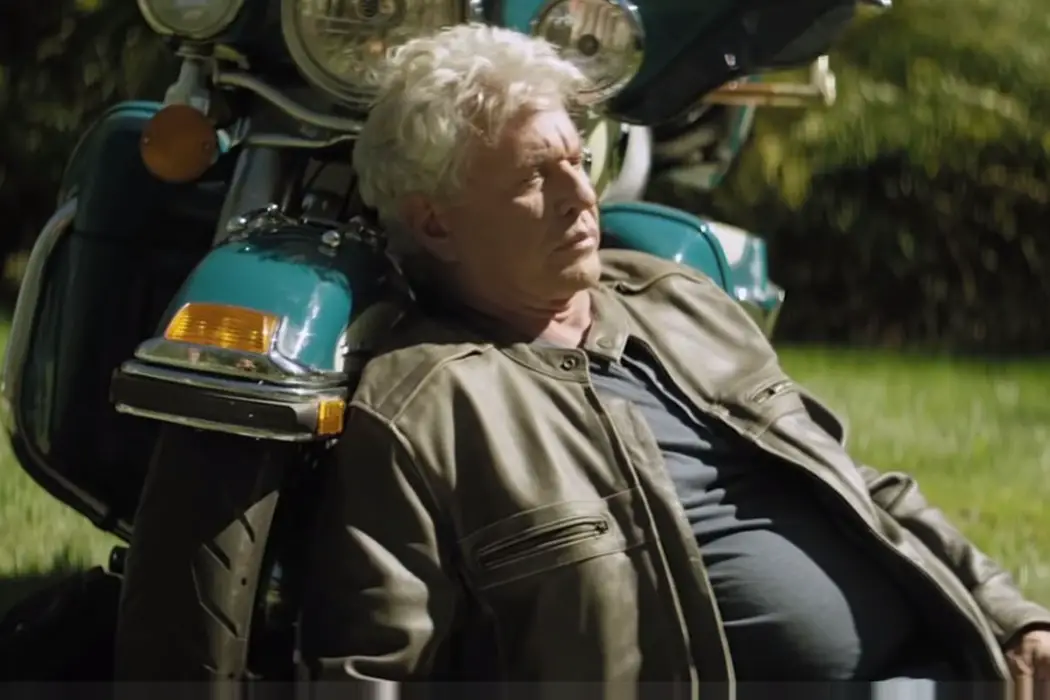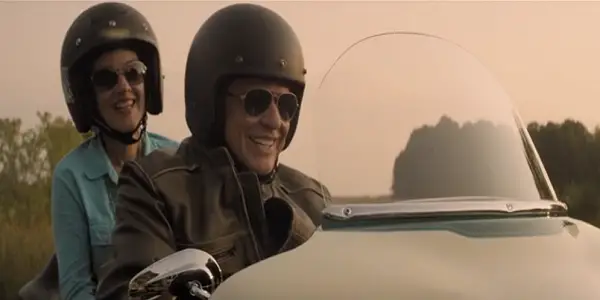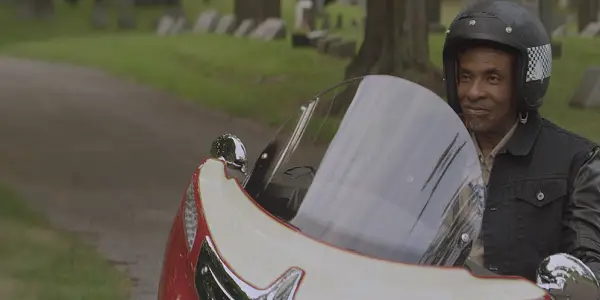AMERICAN DRESSER: Tom Berenger & Keith David Take The Highway

Charlie Nicholson has written about films and other media since…
The third film from writer-director Carmine Cangialosi, American Dresser taps the cathartic journey essential to the road movie to deliver a comfortable, if rather stilted, story about life, regret and progression.
Tom Berenger is John Moore; recently widowed, and struggling to cope with the loss of wife, Sandra (Red Oakes’ Gina Gershon). Distraught, guilt-ridden and estranged from his two adult daughters, Moore suddenly discovers a secret Sandra kept from him for years, which forces him to confront a past racked with regret. To do this, he decides to pursue a lifelong dream: to journey from his Long Island home all the way to Portland, Oregon on his American Dresser motorcycle. Along for the ride is best friend Charlie (to whom Keith David brings a gravelly warmth), and after fixing up their old bikes the pair rev up for the ride of a lifetime.
It’s About the Journey…if the Journey is About Sightseeing
Transforming gradually from heyday trophy to spiritual emblem, the bike drives what is ultimately a predictable road movie, leading Moore into new friendships, exploits and predicaments that encourage him to face his past mistakes.

Among the most visually pleasing scenes are those of the road trip itself, carried through cinematographer Jesse Brunt’s (Colossal) sun-dappled high angles, gliding through Albany’s pine-stacked highways and serene Californian lake districts with an ease that communicates with beautiful simplicity the liberation of taking to the road.
Destinations, too, have a touristy excitement to them; wide expository shots lend discernible impress to Mount Rushmore and Manhattan Bridge, while at the same time enjoying an odd familiarity beneath the comforting twangs of the folk soundtrack.
A Hesitant Script Restricts Cangialosi’s Characters
Off the road, however, the trip struggles to find direction. Between each milestone are the pub standoffs and romantic brushes one might expect of an average road movie, as well as those crucial moments of stillness in which Moore wrestles with his prior mistakes. The most effective of these are those that rest on Berenger’s performance; those in which the camera sits patiently around a campfire as he recounts his experiences in Vietnam with an increasingly furrowed brow.

But though scuffles with burly rival bikers and various romantic encounters set up the post-fifty pair to grapple with the connotations of age in ways reminiscent of The Bucket List, there’s too much dead air between exchanges that attempts at comedy never reach the level of hilarity supposedly believed by its characters. Performances are fine – with the standout actually being Keith David, who supplies just enough of his charismatic authority to the flat script to make Charlie Wylde likeable – but scenes tend to end just prematurely enough to prevent the viewer forming a significant connection with them.
Others – unfortunately mainly the supporting cast – deal with tired, stereotypical characterisations; an early brush with the imposing ‘Earl’ experiences a protracted joke about his name before quickly dying down, while the same manoeuvre leaves John’s fondness for love interest Vera (Penelope Ann Miller) longing to be returned to. There’s one cool scene at a gas pump involving a fellow motorcycling crew, but what could have been a tense faceoff or point of connection between an unknown gang and Moore’s own merely trails off as the crew hop to their next destination.
Nostalgia Doesn’t Quite Hide Thin Characters, Overly-Convenient Plot Threads
Given, neither I, nor my generation seem to be American Dresser’s target audience, so I realise that my issues relating here may be exacerbated by my not being a part of that audience. It must be said that there’s a traceable nostalgia running through the entire thing – from the golden tinted shots to the motorcycle’s symbolic status for recovering the irrevocably lost – which is continually pitched against John’s haunted (but never quite haunting) Vietnam stories and confessions of prior mistakes. The more these inclusions are combined with recurring flashbacks that relive John’s last moments with Sandra, the more his cross-country journey becomes a hark back to the zest, joy and life of an earlier day.
But even if we are to consider Moore’s journey in an earlier context, the plot rarely gives the time necessary to truly enjoy it. Though never disjointed, locations, escapades and people whip by as if fully aware of the film’s 97 minute runtime; a confusing approach, given what is inevitably being driven toward is an uplifting message about taking each day as it comes.
Elsewhere, the thoughtful tone is skewed by overly-convenient plot threads. Early on in their adventure, the pair pick up taciturn repairman, Willie (Cangialosi elbows Sons of Anarchy machismo, with attached devil-may-care attitude); who appears in almost comic slow-mo as the “Need a hand?” answer to Charlie’s “We gotta find a mechanic.”

Side characters tend more to hover around the main protagonist than add anything remarkable. The character with the most opportunity to really affect John across the adventure is Willie, but Cangialosi’s preference for keeping his character mysterious prevents the pair’s growing respect for one another registering anything higher than light poignance by the end. As a result, the supporting cast rarely pose anything more than minor distractions from the protagonist’s quest of self-discovery, which – in a film so heavily concerned with raising the bike as a wistful symbol of resurrection – merely leaves one questioning if the trip has really changed Moore so much after all.
Perhaps I’m being harsh here because the sections American Dresser gets right would have unquestionably contributed to a more touching tale if they’d been more evenly distributed. The final act is scattered with eye-dabbing moments of reconnection and redemption but following a largely hesitant first act and an only occasionally satisfying second, it’s difficult for these scenes to hit.
Conclusion: American Dresser
For a film ostensibly about taking life one mile at a time, American Dresser seems to be so eager to arrive at its uplifting conclusion that it robs the escapades and experiences studding Moore’s cross-country quest of the humour, heart and spirit so blissfully captured in the cinematography. It’s unfortunate, and very slightly frustrating, as the brief moments of redemption scattered throughout the final act have the power to really affect.
What did you think of American Dresser? Did you connect with John Moore’s journey of self-discovery? Share your thoughts down in the comments!
American Dresser was released on September 21 in the U.S.A. All international release dates can be found here.
Does content like this matter to you?
Become a Member and support film journalism. Unlock access to all of Film Inquiry`s great articles. Join a community of like-minded readers who are passionate about cinema - get access to our private members Network, give back to independent filmmakers, and more.
Charlie Nicholson has written about films and other media since 2015, and is approaching his third year studying Film and English Literature at the University of East Anglia. His work can be found on New Game Network, The Independent and Concrete. When he's not expanding his coming-of-age library or buried in a video game, you'll probably find him working on some diorama inspired by eighties-era fantasy. He's also never quite managed to shake his childhood fear of the Gmork. Follow him @Charcolson













